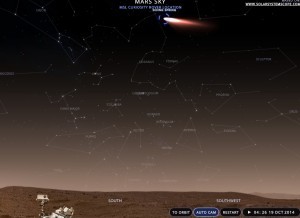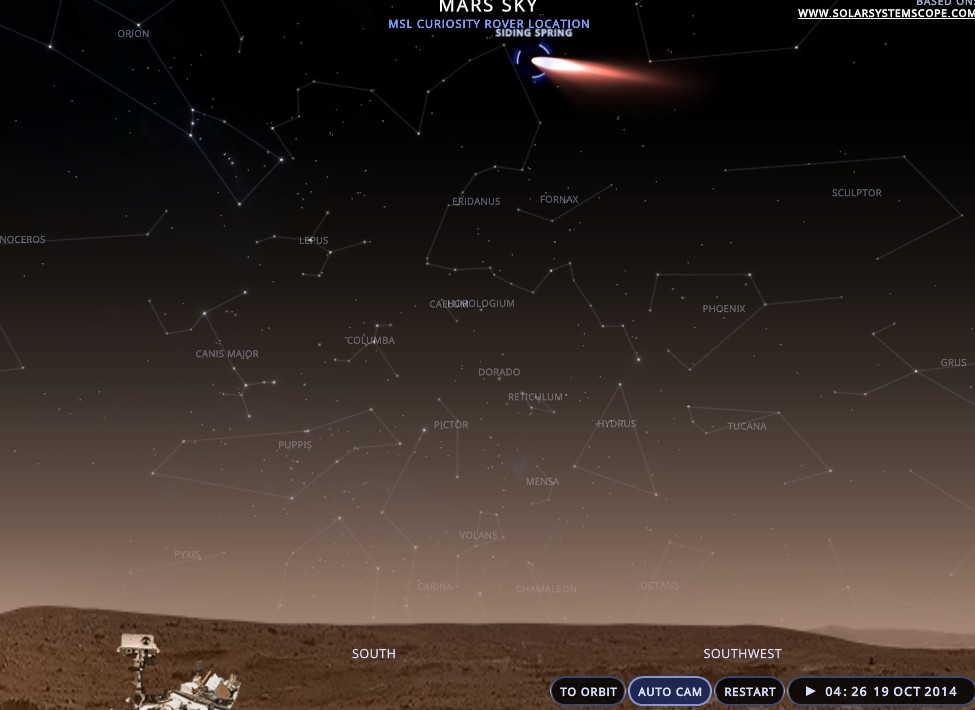September 23, 2014 – This is just too cool to not share. One of my readers, Michael Sadlon, (thanks Michael) has sent me the link to Solar System Scope. Click on the thumbnail of Mars and start the autocam feed. Enjoy!
The MAVEN Mars spacecraft which just entered Martian orbit this week should be well positioned to study the effect the comet will have on the atmosphere of Mars when it makes its closest pass on October 19th. MAVEN and other Mars orbiters are going to be positioned on the far side of the planet from Siding Spring as it passes to ensure that the onboard instruments don’t get damaged from the particles in the coma and comet’s tail. The coma is the glowing nebula that forms as a comet gets close to the Sun. For Siding Spring that nebula is 19,300 kilometers (12,000 miles) in diameter. The coma and the trailing tail consist of material sublimating from the comet’s surface as it is warmed by the Sun. The amount of material sloughed off is estimated to equal 100 kilograms (220 pounds) per second. But that won’t stop MAVEN from studying the comet on its approach.
Why is Siding Spring so interesting? Only discovered a little more than a year ago by Australian, Robert H. McNaught, it originates from the Oort Cloud and therefore represents a first for astronomers. Previously studied comets like Halley’s originate from the much closer Kuiper Belt. We call these short period comets. But Siding Spring is a long period comet disturbed from its location in the Oort Cloud and sent on its way to the inner Solar System. That journey has taken hundreds of thousands of years. The comet’s full orbital period is estimated at one million years.
How fortuitous that at this time we have numerous orbiters and rovers on Mars giving us this unique viewing opportunity. And Curiosity looks like it will have the best view possible. The comet will appear in the sky both day and night as it makes its closest pass, an opportunity for great pictures and great science.










